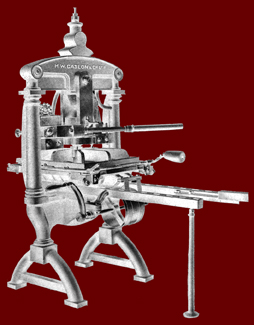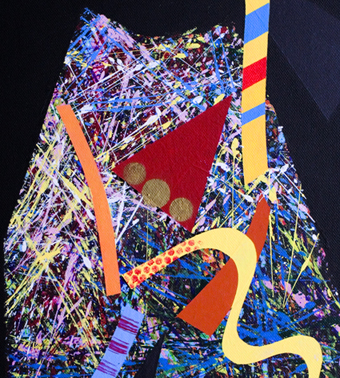GICLEE
INTRODUCTION, PRINTERS, INK AND PAPER
The term "giclée" comes from the French verb which means "to squirt", and this has been applied to injet printing in the context of fine art printing.In addition to the use of archival inks it is important to use good quality media such as Arches paper [see the section on paper], but some inkjet printers will print on just about anything including newsprint and floor tiles [see Mutoh printers in the LINKS section].
My main interest for the last twenty years has been in making prints through digital means. For those people who prefer to use traditional printmaking processes such as etching, it may be hard to accept the use of, what is in effect a reprographic process. However, it should be remembered that all printmaking processes have been used, at some time in there history, as reproductive processes and it should be possible, to draw a very line to be drawn between techniques that are essentially associated with reproduction and those which make an individual intellectual statement.
ARCHIVAL QUALITY
There was a time when fading and discolouration were a major problem in the making of prints by an inkjet printer. Nowadays so much time and money have been put in to research into this problem that the new inks have greater longevity than traditional photographic materials. Check the Wilhelm research site for more information.
DIGITAL POSITIVES / NEGATIVES FOR SCREENPRINTING
One of the process that I have found successful with students is scan an original, which is then manipulated in Photoshop. It is then quite easy to make CMYK colour separations and it is also considerably cheaper than having them made by a specialist company. If at all possible, I have found it best to scan in CMYK mode but the process will still work if you scan in RGB. It is important to note that, in order to create the full range of tones and hues, each of the separations needs individual attention.The separations are printed out in black onto good quality paper or acetate. One can then use the printed acetate sheets as positives, but this does require some trial and error as the image may be too thin to provide good results. One one around this is to use two sheets together, in order to give greater density to the image.Better results may be obtained by making photographic positives using a process camera; the images are then applied to screens coated with photographic emulsion. Some students have found that three colours, without black, gives a far brighter colour range. Alternatively, it may be more effective to introduce further colour printings in order to achieve subtle variations in hue. Registration needs to be very accurate, which is the major problem with this process, however, if the separations are turned into bitmaps and printed as flat colour with a random dot rather than as a true half tone, registration is less problematic.
|
|
|



